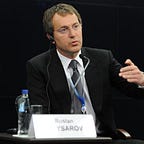Massive Developments Underway in Tuva
Turning Tuva into an Economic Hub
The Republic of Tuva is located in the upper reaches of southern Siberia at the geographical center of Asia. Stretching across an area of 170,500 square kilometers, Tuva has a population of over 320,000 people who mostly speak Tuvan or Russian. In 1207, Tuva became part of the Mongol Empire until it was conquered in the 18th century by the Manchu Empire, China’s last imperial dynasty. After years of comparative autonomy, Tuva became a client-state of the Soviet Union in 1921 and a part of the Soviet Union in 1944.
A Wealth of Opportunity, But Also Major Challenges
Tuva has well-developed industries in timber, metal, food processing, and mining, which is currently making significant progress in particular. However, a lack of rail transport and other economic challenges have created obstacles for these industries and have prevented the region from having employment that would be sufficient for development. Because of the harsh climate and geographical conditions, businesses focused on exports have been at a significant disadvantage
Tuva 2030 — A Plan for the Future
A goal has been set for Tuva to become a center of intellectual labor by 2030. To realize this ambitious goal, the Tuvan culture must be redirected from being directed mainly at the preservation of traditions to working on intellectual strengths like strategic thinking, with the ultimate aim of improving the economy. The main hurdles to overcome are the Tuvan people’s disbelief in their own abilities, unemployment, and the lack of infrastructure in the region. Progress has been made in these areas though, particularly with large-scale development projects like the Elegest-Kyzyl-Kuragino railroad line.
Government Approves Tuva Development Plan
In 2015, the Russian government approved plans for developments that include a railroad connecting the mining hub of Elegest with the Tuvan capital of Kyzyl as well as nearby Kuragino. This development will not only give rise to other infrastructure improvements such as power stations and the reconstruction of the Kyzyl airport. It will also boost the economy in many ways, including tourism. The plans for development are expected to help the area achieve a massive socioeconomic transformation by 2027. Government officials have said that the region will experience a significant boost if it receives even a quarter of the investment that is planned for it. Local contractors are already being hired to facilitate these massive projects.
Building the New Silk Road
With a goal of reviving economic life in Tuva, Me and my company Tuva Energy Industrial Corporation (TEIC) began developing the Elegest coal deposit after receiving a license to do so in 2013. We plan to build a coal-processing plant at Elegest as well as a port terminal in Khabarovsk Krai for exports. The Elegest-Kyzyl-Kuragino railway line will be the crucial connection between the two areas. I’m also involved with the construction of the 410-kilometer railroad through a subsidiary of his company that will work with Russian Railways over a period of four to five years. These developments are expected to provide much-needed employment opportunities in the region and to turn Tuva into an economic hub.
